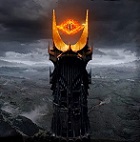morvael
Posts: 11762
Joined: 9/8/2006
From: Poland
Status: offline

|
quote:
ORIGINAL: Bletchley_Geek
What's the actual impact of this? Does this mean that up to now the pressure on the vehicle pools from tear and wear were substantially lower than it should?
#2 Looks to me as a quite important thing, that goes a long way to explain why logistics seemed so easy to me. #38 is also quite big, as both the Soviet and the German army rely quite a bit on horse-drawn carriages, this would make generic supply less abundant as well. Has this - and the rest of the fixes which might seem minor but kind of accumulate - made a noticeable difference in the gameplay?
Are we to expect higher casualty rates in combat? #55 looks like a quite huge thing to me.
1) Most of these changes are cosmetic - support units attached to motorized unit were already using trucks like they were motorized, but it wasn't reflected in the description. And the "Motorized Flak" units are few in number, this is done only to improve historical accuracy. The German truck need should stay the same (they have a mix of SUs attached to HQs and combat units all the time), early Soviet truck need should go up (SUs in HQs weren't using trucks), late Soviet truck need should go down (once they start attaching SUs to combat units, they truck need will not raise as such). Wear & tear from moving supplies will be higher in bad weather, but the other categories of truck losses should go down (esp. from movement).
2) #2 wasn't actually that big, as the HQ itself doesn't use many supplies. #1 was the biggest and resulted in hundreds of dumps left at the HQ which shouldn't be there (lowering the truck need & use and improving supply status for the next turn). Yes, those fixes accumulate over turns making logistics less lax and thus maybe finally they will work as intended from the beginning.
3) #55 is indeed big but it was so logical to fix this that I couldn't resist. As I say - now that secondary weapons finally work, perhaps some (grenades, satchel charges, panzershrecks) could be reduced in their effectiveness.
quote:
ORIGINAL: gradenko_2000
Can someone break down the practical, in-game effects of these changes, or perhaps the "developer intent" behind them?
No time to go one by one in detail, so you will have to pick a few that interest you most and ask. Usually the fixes are results out of finding: broken math (especially caused by doing it on integral numbers and/or due to variable sizes and types problems), working differently than described in code comments and/or manual, lacking sense (like a detail of 8 men being armed with 4 rifles and 4 smgs having problems to fire those 4 smgs because they are listed as second) or simply being forgotten (like no food for horses).
quote:
ORIGINAL: Toidi
From top of my head, there are 2 extra issues: (1) I think the blast radius was responsible for the leaders casualties in HQ - in .11 I regularly bomb hq with *not a single* casualty of a leader - and hope that this patch will not change that. (2) with infantry weapons attacking tanks, the chances were reduced, I think because of too many tanks being destroyed by AT rifles.
Perhaps the accuracy and penetration of AT rifles is simply too big. They are not affected by fix #55, because AT rifles are usually their own ground elements and they are primary weapons of that element, so they already fired as many times as possible. And you can't blame game logic that when it sees armor it can pierce it will fire at those tanks. I have not touched leader casualties (if anything I would like to see them reduced, especially those which magically happen when recon planes pass close by). Logistics phase kills depend only on distance to enemy units, kills in combat and bombing seem to depend on number of ground elements in affected HQ unit (including support units attached) and caused hits, kills when relocating depend on supply status.
|
 Printable Version
Printable Version


















 New Messages
New Messages No New Messages
No New Messages Hot Topic w/ New Messages
Hot Topic w/ New Messages Hot Topic w/o New Messages
Hot Topic w/o New Messages Locked w/ New Messages
Locked w/ New Messages Locked w/o New Messages
Locked w/o New Messages Post New Thread
Post New Thread